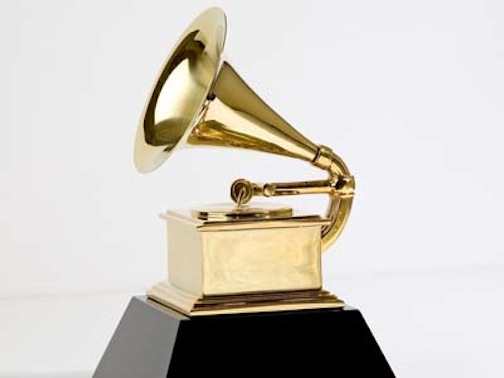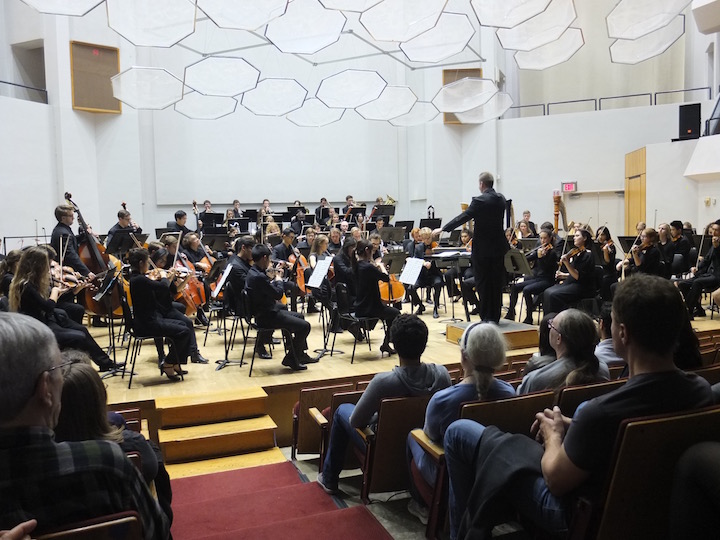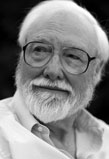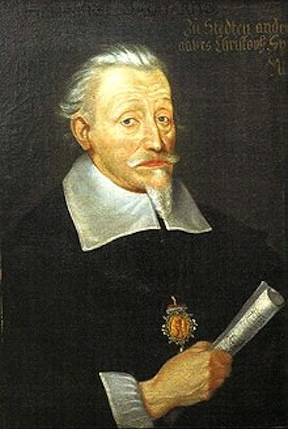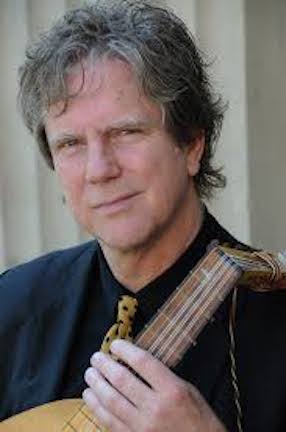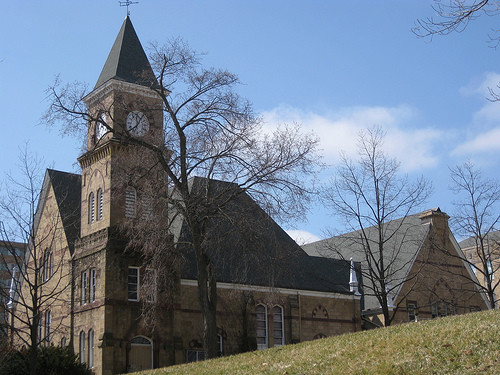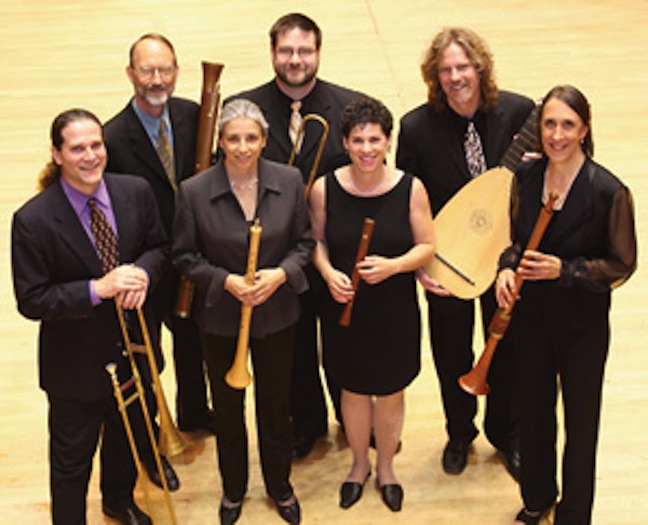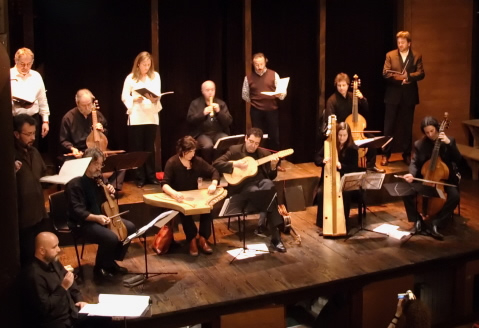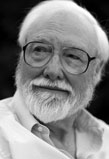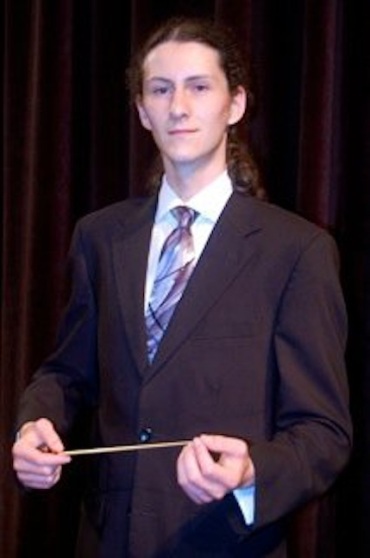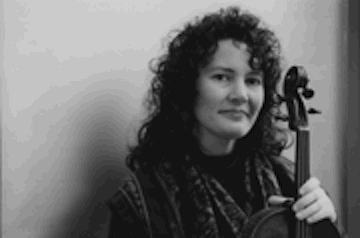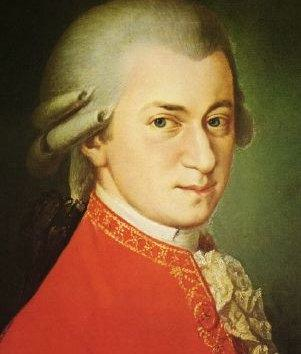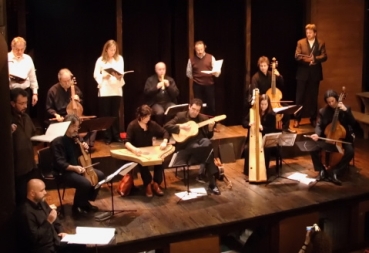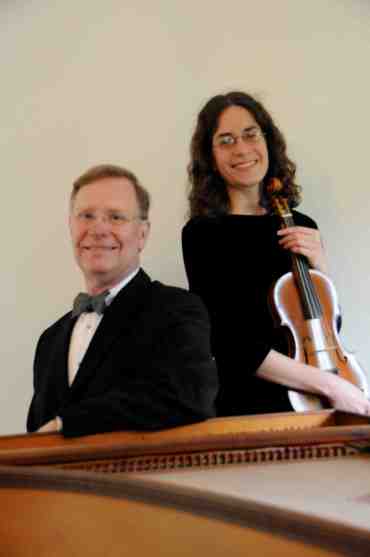The Well-Tempered Ear
Madison’s Sonata à Quattro performs TONIGHT online for the prestigious Boston Early Music Festival
2 Comments
PLEASE HELP THE EAR. IF YOU LIKE A CERTAIN BLOG POST, SPREAD THE WORD. FORWARD A LINK TO IT OR, SHARE IT or TAG IT (not just “Like” it) ON FACEBOOK. Performers can use the extra exposure to draw potential audience members to an event. And you might even attract new readers and subscribers to the blog.
By Jacob Stockinger
The Ear has received the following note from the local early music group, Sonata à Quattro (SAQ):
We have a very exciting announcement to share.
Tonight we will be one of the featured ensembles at the 2021 Boston Early Music Festival Fringe Concerts!
The Boston Early Music Festival (BEMF) is recognized as a national and international leader in the field of early music, and SAQ is thrilled to make its first appearance at this event.
Concert presented during the Boston Early Music Festival’s 2021 Fringe Concerts. Learn more at https://bemf.org/2021-festival/fringe-concerts/
The online premiere of the SAQ concert video will be TONIGHT — Thursday, June 17 — at 7 p.m. ET/6 p.m. CT, and the musicians will be available to chat during and after the recorded performance.
Please join us at this link: https://www.youtube.com/watch?v=tSfzu6Q6DcU
The 50-minute concert, titled “Musical Meditation and Merriment,” features (below, from left) violinists Christine Hauptly Annin and Leanne League; cellist Charlie Rasmussen; and violist Marika Fischer Hoyt.
This period-instrument quartet will perform the following program: Quartet in G Major, TWV 43:G5 by Georg Philipp Telemann (1681-1767); Duo II in D Minor, Op. 19, No. 2, for Violin and Viola by Franz Anton Hoffmeister (1754-1812); Duetto III in G Major, Op. 1, No. 3, for Violin and Cello by Giovanni Battista Cirri (1724-1808, below); and Quartet in D Major, Op. 64, No. “The Lark” by Franz Joseph Haydn (1732-1809).
The concert was live-streamed and recorded at the United Methodist Church in Whitefish Bay, Wis., on April 13, 2021.
From the austere fugal opening of the Telemann to the jaunty Finale of Haydn’s “Lark” Quartet — heard played by the Jerusalem Quartet in the YouTube video at the bottom — this program offers a reflection on the unimaginable year we’ve just experienced, as well as the stirrings of hope, as we awake to a spring and summer of new beginnings.
The slow movements, with their gorgeous string sonorities, range from still, inner contemplation to poignant pleas, while the fast movements outdo one another in wit, verve and sheer joie de vivre.
Tags: #BaroqueMusic, #BejornBerkhout, #BlogPost, #BlogPosting, #BostonEarlyMusicFestival, #BostonMassachusetts, #CentralTime, #ChamberMusic, #CharlieRasmussen, #ChristianChurch, #ChristineHauptlyAnnin, #CityofMadison, #CoronavirusPandemic, #COVID-19, #EasternTime, #FacebookPage, #FacebookPost, #FacebookPosting, #FastMovement, #FranzAntonHoffmeister, #FranzJosephHaydn, #FringeConcerts, #GeorgPhilippTelemann, #GiovanniBatisteCirri, #HistoricallyInformedPerformancePractices, #JacobStockinger, #JerusalemQuartet, #JoiedeVivre, #LarkQuartet, #LeanneLeague, #MadisonWisconsin, #MarikaFischerHoyt, #OnlineConcert, #OnlineFestival, #PeriodInstruments, #RecordedMusic, #SlowMovement, #SonataaQuattro, #StringMusic, #TheEar, #UnitedMethodistChurch, #VirtualConcert, #VirtualFestival, #WhitefishBay, #YouTubeChannel, #YouTubevideo, announcement, appearance, Arts, audience, austere, awake, Baroque, Baroque music, beginning, blog, Boston, Boston Early Music Festival, celiist, cellist, Cello, Central Time, Chamber music, Charlie Rasmussen, chat, Christian, Christian church, Christine Hauptly Annin, church, Classical music, composer, Concert, contemplation, coronavirus, counterpoint, duet, duuo, Early music, Eastern time, ensemble, event, exciting, experience, Facebook, Facebook post, Facebook posting, fast, fast movement, field, finale, first, forward, Franz Anton Hoffmeister, Franz Joseph Haydn, Fringe Concerts, fugal, fugue, Georg Philipp Telemann, George Onslow, Giovanni Battista Cirri, gorgeous, Haydn, help, historically informed performance practices, Hoffmeister, hope, inner, international, Jacob Stockinger, jaunty, Jerusalem, Jerusalem Quartet, joie de vivre, lark, Lark Quartet, leader, Leanne League, learn, like, link, live-stream, local, Madison, Marika Fischer Hoyt, Massachusetts, Meditation, merriment, movement, muisicians, Music, musical, national, new, online, page, pandemic, period instruments, pleas, poignant, post, posting, premiere, present, prestigious, program, recoignize, recorded music, reflection, SAQ, share, Slow movement, Sonata, Sonata à Quattro, sonority, Spring, Still, stirrings, string, string music, summer, tag, Telemann, The Ear, thrilled, tonight, unimaginable, United Methodist Church, United States, vello, verve, video, Viola, Violin, violinist, violist, virtual, Whitefish Bay, Wisconsin, wit, year, YouTube, YouTube channel, YouTube video
Classical music: Here are the classical music nominees for the 2020 Grammy Awards. They make a useful holiday gift guide and highlight the trend toward more diversity
2 Comments
PLEASE HELP THE EAR. IF YOU LIKE A CERTAIN BLOG POST, SPREAD THE WORD. FORWARD A LINK TO IT OR, SHARE IT or TAG IT (not just “Like” it) ON FACEBOOK. Performers can use the extra exposure to draw potential audience members to an event. And you might even attract new readers and subscribers to the blog.
By Jacob Stockinger
Today is Black Friday followed by Small Business Saturday and Cyber Monday — all with special deals and sales.
With that in mind, here is a list of the recently announced nominees in classical music for the 2020 Grammy Awards.
Although it is a self-serving list for a competition sponsored by The Industry, it can also be good way to find holiday gifts to give to others or to receive for yourself.
The list can be useful for spotting trends and finding new releases you may not have heard of.
For example, this year seems especially good for new music or recent works and contemporary composers. You won’t find any Bach, Haydn, Mozart, Beethoven, Schubert, Brahms, Dvorak, Tchaikovsky or Mahler although you will find Berlioz, Schumann, Wagner, Bruckner, Berg, Rachmaninoff and Copland.
Another favorite seems to be the rediscovery of older composers such as Mieczyslaw Weinberg (1919-1996, below) whose centennial has become an occasion for bringing his neglected works to the forefront.
You can also see that like the Oscars, the Grammys seem to be paying more attention to women composers and conductors, artists of color and crossovers or mixed and hybrid genres.
For complete lists of all 84 categories, go to this site and click on the categories that interest you: https://www.grammy.com/grammys/news/2020-grammy-awards-complete-nominees-list
The 62nd annual Grammy Awards will be presented on Sunday, Jan. 26, at the Staples Center in Los Angeles and will be broadcast live on CBS television.
- Best Engineered Album, Classical
An Engineer’s Award. (Artist names appear in parentheses.)
- AEQUA – ANNA THORVALDSDÓTTIR
Daniel Shores, engineer; Daniel Shores, mastering engineer (International Contemporary Ensemble) - BRUCKNER: SYMPHONY NO. 9
Mark Donahue, engineer; Mark Donahue, mastering engineer (Manfred Honeck and Pittsburgh Symphony Orchestra) - RACHMANINOFF – HERMITAGE PIANO TRIO
Keith O. Johnson & Sean Royce Martin, engineers; Keith O. Johnson, mastering engineer (Hermitage Piano Trio) - RILEY: SUN RINGS
Leslie Ann Jones, engineer; Robert C. Ludwig, mastering engineer (Kronos Quartet) - WOLFE: FIRE IN MY MOUTH
Bob Hanlon & Lawrence Rock, engineers; Ian Good & Lawrence Rock, mastering engineers (Jaap Van Zweden, Francisco J. Núñez, Donald Nally, The Crossing, Young People’s Chorus Of NY City & New York Philharmonic)
- Producer Of The Year, Classical
A Producer’s Award. (Artist names appear in parentheses.)
- BLANTON ALSPAUGH
- Artifacts – The Music Of Michael McGlynn (Charles Bruffy & Kansas City Chorale)
• Berlioz: Symphonie Fantastique; Fantaisie Sur La Tempête De Shakespeare (Andrew Davis & Toronto Symphony Orchestra)
• Copland: Billy The Kid; Grohg (Leonard Slatkin & Detroit Symphony Orchestra)
• Duruflé: Complete Choral Works (Robert Simpson & Houston Chamber Choir)
• Glass: Symphony No. 5 (Julian Wachner, The Choir Of Trinity Wall Street, Trinity Youth Chorus, Downtown Voices & Novus NY)
• Sander: The Divine Liturgy Of St. John Chrysostom (Peter Jermihov & PaTRAM Institute Singers)
• Smith, K.: Canticle (Craig Hella Johnson & Cincinnati Vocal Arts Ensemble)
• Visions Take Flight (Mei-Ann Chen & ROCO) - JAMES GINSBURG (below)
- Project W – Works By Diverse Women Composers (Mei-Ann Chen and Chicago Sinfonietta)
• Silenced Voices (Black Oak Ensemble)
• 20th Century Harpsichord Concertos (Jory Vinikour, Scott Speck and Chicago Philharmonic)
• Twentieth Century Oboe Sonatas (Alex Klein and Phillip Bush)
• Winged Creatures & Other Works For Flute, Clarinet, And Orchestra (Anthony McGill, Demarre McGill, Allen Tinkham and Chicago Youth Symphony Orchestra) - MARINA A. LEDIN, VICTOR LEDIN
- Bates: Children Of Adam; Vaughan Williams: Dona Nobis Pacem (Steven Smith, Erin R. Freeman, Richmond Symphony & Chorus)
• The Orchestral Organ (Jan Kraybill)
• The Poetry Of Places (Nadia Shpachenko)
• Rachmaninoff – Hermitage Piano Trio (Hermitage Piano Trio) - MORTEN LINDBERG
- Himmelborgen (Elisabeth Holte, Kare Nordstoga & Uranienborg Vokalensemble)
• Kleiberg: Do You Believe In Heather? (Various Artists)
• Ljos (Fauna Vokalkvintett)
• LUX (Anita Brevik, Trondheimsolistene & Nidarosdomens Jentekor)
• Trachea (Tone Bianca Sparre Dahl & Schola Cantorum)
• Veneliti (Hakon Daniel Nystedt & Oslo Kammerkor) - DIRK SOBOTKA
- Bruckner: Symphony No. 9 (Manfred Honeck & Pittsburgh Symphony Orchestra)
75. Best Orchestral Performance Award to the Conductor and to the Orchestra.
- BRUCKNER: SYMPHONY NO. 9
Manfred Honeck, conductor (Pittsburgh Symphony Orchestra) - COPLAND: BILLY THE KID; GROHG
Leonard Slatkin, conductor (Detroit Symphony Orchestra) - NORMAN: SUSTAIN
Gustavo Dudamel, conductor (Los Angeles Philharmonic) - TRANSATLANTIC
Louis Langrée, conductor (Cincinnati Symphony Orchestra) - WEINBERG: SYMPHONIES NOS. 2 and 21
Mirga Gražinytė-Tyla, conductor (City Of Birmingham Symphony Orchestra & Kremerata Baltica)
- Best Opera Recording
Award to the Conductor, Album Producer(s) and Principal Soloists.
- BENJAMIN: LESSONS IN LOVE & VIOLENCE
George Benjamin, conductor; Stéphane Degout, Barbara Hannigan, Peter Hoare & Gyula Orendt; James Whitbourn, producer (Orchestra Of The Royal Opera House) - BERG: WOZZECK
Marc Albrecht, conductor; Christopher Maltman & Eva-Maria Westbroek; François Roussillon, producer (Netherlands Philharmonic Orchestra; Chorus Of Dutch National Opera) - CHARPENTIER: LES ARTS FLORISSANTS; LES PLAISIRS DE VERSAILLES
Paul O’Dette & Stephen Stubbs, conductors; Jesse Blumberg, Teresa Wakim & Virginia Warnken; Renate Wolter-Seevers, producer (Boston Early Music Festival Chamber Ensemble; Boston Early Music Festival Vocal Ensemble) - PICKER: FANTASTIC MR. FOX
Gil Rose, conductor; John Brancy, Andrew Craig Brown, Gabriel Preisser, Krista River & Edwin Vega; Gil Rose, producer (Boston Modern Orchestra Project; Boston Children’s Chorus) - WAGNER: LOHENGRIN
Christian Thielemann, conductor; Piotr Beczała, Anja Harteros, Tomasz Konieczny, Waltraud Meier & Georg Zeppenfeld; Eckhard Glauche, producer (Festspielorchester Bayreuth; Festspielchor Bayreuth)
- Best Choral Performance
Award to the Conductor, and to the Choral Director and/or Chorus Master where applicable and to the Choral Organization/Ensemble.
- BOYLE: VOYAGES
Donald Nally, conductor (The Crossing) - DURUFLÉ: COMPLETE CHORAL WORKS
Robert Simpson, conductor (Ken Cowan; Houston Chamber Choir) - THE HOPE OF LOVING
Craig Hella Johnson, conductor (Conspirare) - SANDER: THE DIVINE LITURGY OF ST. JOHN CHRYSOSTOM
Peter Jermihov, conductor (Evan Bravos, Vadim Gan, Kevin Keys, Glenn Miller & Daniel Shirley; PaTRAM Institute Singers) - SMITH, K.: THE ARC IN THE SKY
Donald Nally, conductor (The Crossing)
- Best Chamber Music/Small Ensemble Performance
For new recordings of works with chamber or small ensemble (twenty-four or fewer members, not including the conductor). One Award to the ensemble and one Award to the conductor, if applicable.
- CERRONE: THE PIECES THAT FALL TO EARTH
Christopher Rountree and Wild Up - FREEDOM & FAITH
PUBLIQuartet - PERPETULUM
Third Coast Percussion - RACHMANINOFF – HERMITAGE PIANO TRIO
Hermitage Piano Trio - SHAW: ORANGE
Attacca Quartet
79. Best Classical Instrumental Solo Award to the Instrumental Soloist(s) and to the Conductor when applicable.
- THE BERLIN RECITAL
Yuja Wang - HIGDON: HARP CONCERTO
Yolanda Kondonassis; Ward Stare, conductor (The Rochester Philharmonic Orchestra) - MARSALIS: VIOLIN CONCERTO; FIDDLE DANCE SUITE
Nicola Benedetti; Cristian Măcelaru, conductor (Philadelphia Orchestra) - THE ORCHESTRAL ORGAN
Jan Kraybill - TORKE: SKY, CONCERTO FOR VIOLIN
Tessa Lark; David Alan Miller, conductor (Albany Symphony)
80. Best Classical Solo Vocal Album Award to: Vocalist(s), Collaborative Artist(s) (Ex: pianists, conductors, chamber groups) Producer(s), Recording Engineers/Mixers with 51% or more playing time of new material.
- THE EDGE OF SILENCE – WORKS FOR VOICE BY GYÖRGY KURTÁG
Susan Narucki (Donald Berman, Curtis Macomber, Kathryn Schulmeister & Nicholas Tolle) - HIMMELSMUSIK
Philippe Jaroussky & Céline Scheen; Christina Pluhar, conductor; L’Arpeggiata, ensemble (Jesús Rodil & Dingle Yandell) - SCHUMANN: LIEDERKREIS OP. 24, KERNER-LIEDER OP. 35
Matthias Goerne; Leif Ove Andsnes, accompanist - SONGPLAY
Joyce DiDonato; Chuck Israels, Jimmy Madison, Charlie Porter and Craig Terry, accompanists (Steve Barnett and Lautaro Greco) - A TE, O CARA
Stephen Costello; Constantine Orbelian, conductor (Kaunas City Symphony Orchestra)
- Best Classical Compendium
Award to the Artist(s) and to the Album Producer(s) and Engineer(s) of over 51% playing time of the album, if other than the artist.
- AMERICAN ORIGINALS 1918
John Morris Russell, conductor; Elaine Martone, producer - LESHNOFF: SYMPHONY NO. 4 ‘HEICHALOS’; GUITAR CONCERTO; STARBURST
Giancarlo Guerrero, conductor; Tim Handley, producer - MELTZER: SONGS AND STRUCTURES
Paul Appleby & Natalia Katyukova; Silas Brown & Harold Meltzer, producers - THE POETRY OF PLACES
Nadia Shpachenko; Marina A. Ledin & Victor Ledin, producers - SAARIAHO: TRUE FIRE; TRANS; CIEL D’HIVER
Hannu Lintu, conductor; Laura Heikinheimo, producer
- Best Contemporary Classical Composition
A Composer’s Award. (For a contemporary classical composition composed within the last 25 years, and released for the first time during the Eligibility Year.) Award to the librettist, if applicable.
- BERMEL: MIGRATION SERIES FOR JAZZ ENSEMBLE & ORCHESTRA
Derek Bermel, composer (Derek Bermel, Ted Nash, David Alan Miller, Juilliard Jazz Orchestra & Albany Symphony Orchestra) - HIGDON: HARP CONCERTO
Jennifer Higdon, composer (Yolanda Kondonassis, Ward Stare & The Rochester Philharmonic Orchestra) - MARSALIS: VIOLIN CONCERTO IN D MAJOR
Wynton Marsalis, composer (Nicola Benedetti, Cristian Măcelaru & Philadelphia Orchestra) - NORMAN: SUSTAIN
Andrew Norman, composer (Gustavo Dudamel & Los Angeles Philharmonic) - SHAW: ORANGE
Caroline Shaw, composer (Attacca Quartet) - WOLFE: FIRE IN MY MOUTH
Julia Wolfe, composer (Jaap Van Zweden, Francisco J. Núñez, Donald Nally, The Crossing, Young People’s Chorus Of NY City & New York Philharmonic)
Tags: #20thCentury, #AaronCopland, #AlbanBerg, #AlbanySymphony, #AmericanJazz, #AndrewDavis, #AnnaThorvaldsdottir, #AntonBruckner, #AntoninDvorak, #ArtistsofColor, #AttaccaQuartet, #BaroqueMusic, #BerlinGermany, #BillytheKid, #BlackFriday, #BlackOakEnsemble, #BlantonAlspaugh, #BlogPost, #BlogPosting, #BostonEarlyMusicFestival, #CarolineShaw, #ChamberMusic, #ChicagoPhilharmonic, #ChoralMusic, #ChristianThielemann, #CincinnatiPops, #CincinnatiSymphonyOrchetsra, #CityofBirminghamOrchestra, #ClarinetConcerto, #ClassicalGuitar, #ContemporaryComposers, #CyberMonday, #DerekBermel, #DetroitSymphony, #FacebookPost, #FacebookPosting, #FluteConcerto, #FranzJosephHaydn, #FranzSchubert, #GidonKremer, #GrammyAwards, #GuitarConcerto, #GustavMahler, #GustavoDudamel, #HectorBerlioz, #HolidayGiftGuide, #HybridGenre, #InstrumentalMusic, #JamesGinsburg, #JappVanSweden, #JenniferHigdon, #JohannesBrahms, #JohannSebastianBach, #JoyceDiDonato, #JulianWachner, #JuliaWolfe, #KaijaSaariaho, #KremerataBaltica, #KronosQuartet, #LeifOveAndsnes, #LeonardSlatkin, #LesArtsFlorissants, #LivingComposers, #LosAngeles, #LouisLangree, #LudwigVanBeethoven, #ManfredHoneck, #Marc-AntoineCharpentier, #MatthiasGoerner, #MauriceDuruflé, #MichaelTorke, #MieczyslawWeinberg, #MirgaGražinytė-Tyla, #MixedGenre, #NewMusic, #NewYorkCity, #NewYorkPhilharmonic, #NicolaBenedetti, #OboeConcerto, #OboeSonata, #OrchestralMusic, #PeterIlyichTchaikovsky, #PhilipGlass, #PianoTrio, #PittsburghSymphony, #RalphVaughanWilliams, #RichardWagner, #RobertSchumann, #RochesterPhilharmonic, #RoyalOperaHouse, #SergeiRachmaninoff, #SergeiRachmaninov, #SmallBusinessSaturday, #SoundEngineer, #StaplesCenter, #StephenCostello, #StringQuartet, #SymphonicMusic, #TerryRiley, #TobiasPicker, #TorontoSymphonyOrchestra, #ViolinConcerto, #VocalMusic, #WilliamShakespeare, #WolfgangAmadeusMozart, #WyntonMarsalis, #YolandaKondonassis, #YujaWang, 20th-century, Aaron Copland, Alban Berg, Albany Symphony, American, Andrew Davis, Anna Thorvaldsdottir, annual, Anton Bruckner, Antonín Dvořák, artists of color, Attacca Quartet, award, Bach, Baroque music, Beethoven, Berg, Berlin, Berlioz, best, Billy the Kid, black, Black Friday, Black Oak Ensemble, Blanton Alspaugh, blog, Boston Early Music Festival, Brahms, Broadcast, Bruckner, Business, buying, California, canticle, Caroline Shaw, category, CBS, CBS-TV, Chamber music, Chicago, Chicago Philharmonic Orchestra, choral music, chorus, Christian Thielemann, Cincinnati Pops, Cincinnati Symphony Orchestra, City of Birmingham Symphony Orchestra, clarinet, Classical music, classicalmusic, Competition, composer, concerto, contemporary composers, Copland, crossover, cyber, Cyber-Monday, dance, deal, Derek Bermel, Detroit, Detroit Symphony, divine, Dvorak, Early music, Earth, edge, engineer, ensemble, Facebook, faith, fiddle, fire, flute, forefront, forward, Franz Joseph Haydn, Franz Schubert, freedom, genre, Germany, Gidon Kremer, give, good, Grammy Awards, Grammys, guide, guitar, Gustav Mahler, Gustavo Dudamel, harp, harpsichord, Haydn, Hector Berlioz, Higdon, Holiday, holiday gift guide, hope, hybrid genre, industry, instrumental, James Ginsburg, Japp Van Sweden, Jazz, Jennifer Higdon, Johann Sebastian Bach, Johannes Brahms, Joyce DiDonato, Julia Wolfe, Julian Wachner, Kaija Saariaho, Kremerata Baltica, Kronos Quartet, Kurtag, Leif Ove Andsnes, Leonard Slatkin, Les Arts Florissants, lessons, like, link, living, living composers, Lohengrin, Los Angeles, Los Angeles Philharmonic, Louis Langrée, Love, loving, Ludwig van Beethoven, Mahler, Manfred Honeck, Marc-Antoine Charpentier, Matthias Goerner, Maurice Durufle, Michael Torke, Mieczyslaw Weinberg, Mirga Grazinyte-Tyla, mixed, mixed genre, mouth, Mozart, neglected, new, New Music, New York City, New York Philharmonic, Nicola Benedetti, nomination, nominee, Oboe, oboe sonata, occasion, opera, orange, Orchestra, orchestral, organ, original, Oscars, percussion, performance, Peter Ilyich Tchaikovsky, Philip Glass, Pianist, Piano, Piano Trio, Pittsburgh Symphony Orchestra, places, Poetry, pops, post, posting, producer, Rachmaninoff, Rachmaninov, Ralph Vaughan Williams, receive, recital, rediscovery, release, Retail, Richard Wagner, Robert Schumann, Rochester Philharmonic Orchestra, Royal Opera House, sale, Schubert, Schumann, Sergei Rachmaninoff, Sergei Rachmaninov, Shakespeare, share, Shopping, silence, singer, site, sky, small, solo, Sonata, song, special, Staples Center, Stephen Costello, String quartet, Suite, sun, symphonic music, symphony, tag, Tchaikovsky, Tchakovsky, Television, Terry Riley, Tobias Picker, Torke, Toronto Symphony Orchestra, trend, Trinity, TV, Versailles, violence, Violin concerto, violinist, vision, vocal music, voices, voyage, Wagner, Wang, Weinberg, Wolfgang Amadeus Mozart, women, Wozzeck, Wynton Marsalis, year, Yolanda Kondonassis, young people, Yuja Wang
Classical music: Sunday brings the winners’ concert of the UW Concerto and Composition Competition plus a harpsichord recital
1 Comment
IF YOU LIKE A CERTAIN BLOG POST, PLEASE SPREAD THE WORD. FORWARD A LINK TO IT OR, SHARE or TAG IT (not just “Like” it) ON FACEBOOK. Performers can use the extra exposure to draw potential audience members to an event.
By Jacob Stockinger
Two more noteworthy concerts will take place this coming Sunday, March 10.
UW-MADISON CONCERTO AND COMPOSITION COMPETITION
On Sunday night at 7:30 p.m. in Mills Hall, the annual winners’ concert of the UW-Madison Concerto and Composition Competition will take place.
The concert features the UW Symphony Orchestra (below top) under conductor Chad Hutchinson (below bottom) with four instrumentalists, one singer and one composer. All are current students at the University of Wisconsin-Madison’s Mead Witter School of Music.
Admission is $12, but free to students, children, music majors, faculty and staff.
Well-know works on the program include: Adalia Hernandez Abrego and Jiawan Zhang playing the Concerto for Two Pianos in D minor by Francis Poulenc; Richard Silvers playing the first two movements of the Violin Concerto in A minor by Antonin Dvorak; soprano Cayla Rosché singing the first and third songs of the “Four Last Songs” by Richard Strauss; and Chia-Yu Hsu playing the Concertino for Bassoon and Orchestra by Marcel Bitsch. In addition, there will be the world premiere of “Fanfare for Orchestra” by student composer Anne McAninch.
To learn more about the concert, and to see photos and videos of the performers who discuss themselves and the works they will play, see the YouTube video below and go to:
HARPSICHORD RECITAL
Earlier on Sunday afternoon is a concert that should appeal to early music fans: At 3 p.m. the First Unitarian Society of Madison, 900 University Bay Drive, will present the fifth Annual Mark Rosa Harpsichord Recital.
The performance features harpsichordist Jason J. Moy (below), with special guests bass violist Katherine Shuldiner and baroque violinist Kangwon Lee Kim.
The all-French baroque program is called “The Angel, The Devil and The Sun King: Music and Rivalry in the Court of Louis XIV” and features works by Marin Marais, Antoine Forqueray, Jacques Duphly and Jean-Philippe Rameau.
Tickets will be available at the door: $20 for general admission, $12 for seniors, students and veterans.
Moy is director of the Baroque Ensemble and a harpsichord instructor at the DePaul University School of Music. He has performed across the United States, Canada and Europe, including every Boston Early Music Festival since 2013.
One of Chicago’s most sought-after early keyboard specialists, Moy was recently named artistic director of Ars Musica Chicago. He also plays as part of the Dame Myra Hess International Concert Series at the Chicago Cultural Center. Madisonians may be familiar with his playing from his appearances with the Wisconsin Chamber Orchestra.
You can hear him discuss playing the harpsichord and talk about its modern history in the YouTube video below. For more information, go to: www.jjmoy.com
Kangwon Lee Kim (below) is a versatile violinist on both baroque and modern violins. She is familiar to Madisonians as the concertmaster and assistant artistic director of Madison Bach Musicians. She has also given recitals throughout the U.S. and in Korea, Canada, Puerto Rico, Switzerland, Norway and the Czech Republic.
Katherine Shuldiner (below) graduated from the Oberlin Conservatory in viola da gamba. She performs regularly with other early music specialists, and ensembles such as the Bach and Beethoven Experience, VOX3 Collective and the Newberry Consort. She has taught at the Whitewater and Madison Early Music Festivals. www.kateshuldiner.com
Tags: #AdaliaHernandezAbrego, #AnneMcAninch, #AntoineForqueray, #AntoninDvorak, #ArsMusicaChicago, #ArtisticDirector, #BaroqueEnsemble, #BaroqueMusic, #BassoonConcerto, #BassoonMusic, #BassViol, #BlogPost, #BlogPosting, #BostonEarlyMusicFestival, #BostonMassachusetts, #CaylaRosché, #ChadHutchinson, #ChicagoCulturalCenter, #ChicagoIllinois, #ConcertoCompetition, #CzechRepublic, #DePaulUniversity, #FacebookPost, #FacebookPosting, #FirstUnitarianSocietyofMadison, #FourLastSongs, #FrancisPoulenc, #FrenchMusic, #HarpsichordMusic, #JacquesDuphly, #Jason Moy, #JasonMoy, #Jean-PhilippeRameau, #JiawanZhang, #JohannSebastianBach, #KangwonKim, #KatherineShuldiner, #LouisXIV, #LudwigVanBeethoven, #MadisonBachMusicians, #MadisonEarlyMusicFestival, #MarcelBitsch, #MarinMarais, #MarkRosa, #MeadWitterSchoolofMusic, #ModernHistory, #MusicMajor, #MyraHess, #NewberryConsort, #OberlinConservatory, #PianoConcerto, #PuertoRico, #RichardSilvers, #RichardStrauss, #SchoolofMusic, #Sundayafternoon, #SunKing, #TheAngel, #TheDevil, #UnitedStates, #UniversityofWisconsin-Madison, #UniversityofWisconsin-Whitewater, #UWSymphonyOrchestra, #VioladaGamba, #ViolinConcerto, #WhitewaterEarlyMusicFestival, #WisconsinChamberOrchestra, #WorldPremiere, #YouTubevideo, Adalia Hernandez Abrego, admission, adult, afternoon, angel, Anne McAninch, annual, Antoine Forqueray, Antonín Dvořák, Ars Musica Chicago, Artistic director, Arts, audience, Bach, Baroque, Baroque Ensemble, bass viol, Bassoon, Beethoven, blog, Boston, Boston Early Music Festival, Canada, Cayla Rosché, Chad Hutchinson, Chamber music, Chia-Yu Hsu, Chicago, Chicago Cultural Center, children, Classical music, composer, Composition, Concert, concertino, concertmaster, concerto, conductor, court, current, Czech Republic, DePaul University, Devil, discuss, Early music, Europe, Facebook, faculty, fanfafe, First Unitarian Society of Madison, forward, Four Last Songs, Francis Poulenc, French, harpsichord, History, instrumentalist, Jacob Stockinger, Jacques Duphly, Jean-Philippe Rameau, Jiawan Zhang, Johann Sebastian Bach, Kangwon Kim, Katherine Shuldiner, Keyboard, Korea, like, lnk, Louis XIV, Ludwig van Beethoven, Madison, Madison Bach Musicians, Madison Early Music Festival, Madisonian, major, Marcel BItsch, Marin Marais, Mark Rosa, Mead Witter School of Music, modern, Music, music major, Myra Hess, Newberry Consort, Norway, noteworthy, Oberlin Conservatory, Orchestra, performer, photo, Piano, playing, post, posting, Puerto Rico, Richard Silvers, Richard Strauss, rivalry, School of Music, share, sing, singer, song, soprano, specialist, staff\, Student, students, Sun King, Sunday, Switzerland, symphony, tag, talk, teach, two-piano, U.S., United States, University of Wisconsin-Madison School of Music, University of Wisconsin-Whitewater, University of Wisconsin–Madison, UW Symphony Orchestra, UW-Madison, Veteran, veterans, video, viola da gamba, Violin, WaterwaterWisconsin, well-known, Whitewater Early Music Festival, Wisconsin, Wisconsin Chamber Orchestra, word, work, world premiere, YouTube, Zhang
Classical music: The new period-instrument group Sonata à Quattro makes its debut and excels in early Baroque music
Leave a Comment
ALERT: The All-Festival Concert that closes this summer’s 19th annual Madison Early Musical Festival will take place in Mills Hall on Saturday night at 7:30 p.m. Admission is $20 for the general public, $10 for seniors and students. Here are two links where you can find more specific information, including composers and works on the program:
https://memf.wisc.edu/event/all-fest-2018/
By Jacob Stockinger
Here is a special posting, a review written by frequent guest critic and writer for this blog, John W. Barker. Barker (below) is an emeritus professor of Medieval history at the University of Wisconsin-Madison. He also is a well-known classical music critic who writes for Isthmus and the American Record Guide, and who hosts an early music show once a month on Sunday morning on WORT FM 89.9 FM. For years, he served on the Board of Advisors for the Madison Early Music Festival and frequently gives pre-concert lectures in Madison.
By John W. Barker
Marika Fischer Hoyt (below) is becoming another powerhouse in our musical scene. Already a spark plug of the Ancora String Quartet, and now the director of the annual “Bach Around the Clock” bashes, she has organized a new ensemble, Sonata à Quattro, which made its debut on Wednesday night at Pres House.
This was done under the aegis of the current Madison Early Music Festival (MEMF) as a “fringe concert” — in the manner long-established by the Boston Early Music Festival. Plus, the concert’s theme was “The Lübeck Connection,” clearly tying it to the MEMF.
The music was early Baroque, almost entirely from the 17th century.
The first half presented pieces by seven composers, including, among the better-known ones, Michael Praetorius, Giovanni Gabrieli, Heinrich Schütz, Heinrich Ignaz Biber and Antonio Vivaldi.
In the earlier pieces, the instruments were not originally specified at all — and one of them was in fact purely vocal. But the later ones clearly displayed the definition of the early string ensemble.
Indeed, the basic players — besides the backup harpsichord — were seated (below) in what is now familiar in the configuration of the latter-day string quartet, with the subtle suggestion that the earlier sonata à quattro genre was its natural predecessor.
The presence here of Vivaldi—besides Gabrieli, the only Italian among these Germans, and of later date—seemed a bit incongruous, but his familiar Sinfonia ‘al Santo Sepolcro’ actually illustrated well the mature à quattro texture. (You can hear the Vivaldi in the YouTube video at the bottom.)
And a most impressive conclusion for this first half of the program was the fascinating eight-part Sonata in A minor by the sadly neglected Samuel Capricornus (1628-1665)—its eight-voice scoring not serving as a double choir but as a richly textured study in contrasting high with low parts.
For this first half, the core performers were Nathan Giglierano and Christine Hauptly Annin, violins; Fischer-Hoyt, viola; and Charlie Rasmussen, cello, with harpsichordist Daniel Sullivan.
They were joined along the way by gambist Phillip Serna (below top) who performed later on violone; and, for the Capricornus also violinist Thalia Coombs (below second), violist Micah Behr (below third) and viola da gambist Eric Miller (below bottom, in a photo by Katrin Talbot).
The program’s second half was devoted entirely to the music of Dietrich Buxtehude (below, ca. 1637-1707), the big star of the MEMF constellation.
First we had a Trio in B-flat from his Op. 2 collection, then a slightly French-style solo harpsichord Suite in D minor from Daniel Sullivan (below top).
Finally, we had two solo cantatas, sung by Kristin Knutson (below bottom), whose lovely soprano voice blended beautifully with the instruments.
This new ensemble will continue with concerts scheduled ahead for the coming season. But certainly this appearance represents a beautiful, and perfectly timed, introduction in a concert of true delight.
Tags: #AmericanRecordGuide, #AncoraStringQuartet, #AntonioVivaldi, #BachAroundtheClock, #BaroqueEra, #BaroqueMusic, #BostonEarlyMusicFestival, #ChamberMusic, #DietrichBuxtehude, #EarlyBaroque, #GermanBaroque, #GermanComposers, #GermanMusic, #GiovanniGabrieli, #HarpsichordContinuo, #HarpsichordMusic, #HeinrichBiber, #HeinrichSchütz, #IsthmusNewspaper, #ItalianBaroque, #ItalianComposers, #JohannSebastianBach, #JohnW.Barker, #LübeckGermany, #MadisonEarlyMusicFestival, #MedievalHistory, #MichaelPraetorius, #MusicCritic, #PeriodInstrument, #PresHouse, #RadioHost, #SamuelCapricornus, #SonataaQuattro, #StringQuartet, #UniversityofWisconsin, #UniversityofWisconsin-Madison, #WORT-FM89.9, #YouTubevideo, American Record Guide, Ancora String Quartet, Antonio Vivaldi, Arts, Bach, Baroque, Boston Early Music Festival, Cantata, Cello, Chamber music, Classical music, composer, critic, debut, Dietrich Buxtehude, Early music, ensemble, Gabrieli, Germany, Giovanni Gabrieli, harpsichord, Heinrich Biber, Heinrich Schütz, History, Isthmus, Italian Baroque, Italian composers, Jacob Stockinger, Johann Sebastian Bach, John W. Barker, lecture, Madison Early Music Festival, Medieval, MEMF, Michael Praetorius, Music, natural, public, Radio, Samuel Capricornus, show, solo, Sonata, soprano, String quartet, Student, Suite, United States, University of Wisconsin-Madison School of Music, University of Wisconsin–Madison, Viola, viola da gamba, Violin, violone, Vivaldi, vocal music, voice, Wisconsin, WORT-FM 89.9, YouTube
Classical music: The early music group Ensemble SDG will perform psalms by Heinrich Schütz and other composers as well as sonatas and a canticle this Saturday night at Luther Memorial Church.
Leave a Comment
By Jacob Stockinger
The Madison-based duo Ensemble SDG will perform a concert of early music on this Saturday night, November 22, 2014, at 7 p.m. in the Luther Memorial Church (below), 1021 University Avenue, in Madison, Wisconsin.
The concert will feature special guests William Hudson, tenor, and Katherine Shuldiner, viola da gamba.
The program includes settings of Psalm texts by Heinrich Schütz (below with his psalms at bottom in a YouTube video), Johann Hermann Schein, and Jacques de Bournonville, with a setting by Johann Philipp Krieger of the anonymous canticle Laetare anima mea, as well as sonatas by Giovanni Battista Fontana, Dieterich Buxtehude and Elisabeth Jacquet de la Guerre.
Ensemble SDG (below) features Madison musicians Edith Hines, baroque violin, and John Chappell Stowe, professor of harpsichord and organ at the University of Wisconsin-Madison School of Music. The duo has performed across the United States, and their recording of the complete works of J. S. Bach for violin and keyboard is soon to be released by Arabesque Records.
William Hudson is a founding member and director of LIBER: Ensemble for Early Music and was recently appointed Assistant Professor of voice and diction at Illinois Wesleyan University (Bloomington, Ill.).
Katherine Shuldiner recently graduated from Oberlin Conservatory of Music, specializing in viola da gamba performance. She lives and works in Chicago, Illinois.
Admission to the concert on November 22 is $15; admission is free for students with a valid ID.
Ensemble SDG, a baroque violin and keyboard duo formed in 2009, performs music spanning the entire Baroque period, with a particular focus on the works of Johann Sebastian Bach. The duo has presented works by German, French and Italian composers of the 17th and 18th centuries in recitals from the Midwest to the East Coast. Venues include Fringe Concerts at the 2009, 2011, and 2013 Boston Early Music Festivals; a recital featuring the Brombaugh organ at First Presbyterian Church in Springfield, Illinois; the biennial meeting of the American Bach Society and the annual joint conclave of the Midwest and Southeastern Historical Keyboard Societies; the Michigan Festival of Sacred Music; Wisconsin Public Radio’s Sunday Afternoon Live from the Chazen; and multiple appearances at the University of Wisconsin–Madison, one being a performance of J.S. Bach’s six sonatas for violin and obbligato keyboard. This fall the duo will release a recording of Bach’s complete works for violin and keyboard.
Ensemble SDG takes its name from the epigraph (below top) used by Johann Sebastian Bach (below bottom) to sign many of his works. Soli Deo Gloria (“to God alone the glory”) represents the members’ common approach to music and to life, and it is with this grounding that they approach their technique, choice of repertoire, and interpretative decisions.
Highly sought after as a specialist in historical performance, tenor William Hudson has been described as “positively hypnotic” by Gramophone magazine. An accomplished ensemble singer, Mr. Hudson has performed with many of the nation’s leading early music ensembles including the Boston Early Music Festival Opera, The New York Collegium, The Waverly Consort, The Rose Ensemble, Boston Bach Ensemble, and Ensemble Project Ars Nova (PAN).
As a founding member and director of LIBER: Ensemble for Early Music (formerly Liber unUsualis), he has performed extensively throughout North America and abroad at international music festivals in England, Wales, Ireland, Belgium, Germany, France, Latvia, Estonia, and Spain. Mr. Hudson also enjoys an active solo career, singing the Evangelist in Johann Sebastian Bach’s St. John Passion, Apollo in Claudio Monteverdi’s Orfeo, the title role in Giacomo Carissimi’s Jephte, Lucano in Monteverdi’s L’incoronazione di Poppea, Mercury in Eccles’ Judgment of Paris, and Alessandro Stradella’s oratorio San Giovanni Battista with the Jerusalem Baroque Orchestra.
An active scholar and clinician, Mr. Hudson (below, in a photo by Tall & Small Photography) was the winner of the 2009 Noah Greenberg award and has presented at the International Congress of Medieval Studies in Kalamazoo. He has led master-classes and given lecture-demonstrations in medieval performance practice at universities throughout North America. He has recorded with Naxos, Passacaille, Arsis, Titanic and Dorian. Mr. Hudson holds a Master’s degree in Historical Performance from the Longy School of Music and a Doctor of Music in Early Music from Indiana University. He is a Visiting Assistant Professor of voice and diction at Illinois Wesleyan University in Bloomington, Illinois.
Katherine Shuldiner graduated from Oberlin Conservatory in viola da gamba performance under the tutelage of Catharina Meints. She has performed with Chicago based ensembles such as The Newberry Consort, BBE: Bach and Beethoven Ensemble, and The OC (The Opera Company).
She has also performed with Washington Bach Consort and La Follia Austin Baroque. Katherine recently finished her two-year term on the board of the Viola da Gamba Society of America and was chosen to perform in the first Early Music America’s Young Performers Festival during Boston Early Music Festival. This past summer, Katherine taught at the Madison Early Music Festival as well as the VdGSA Conclave.
Tags: Arabesque, Arts, Austin, Bach, Baldwin-Wallace University, Baroque, Beethoven, Belgium, Boston, Boston Early Music Festival, canticle, Cello, Chamber music, Chicago, Classical music, Compact Disc, Dorian, Early music, Edith Hines, England, Ensemble SDG, Estonia, First Unitarian Society of Madison, Florida Atlantic University, France, French music, German music, Germany, Gramphone, harpsichord, Heinrich Schütz, ILLINOIS, Illinois Wesleyan University, Indiana University, Ireland, Italian music, Jacob Stockinger, Johann Sebastian Bach, John Chappell Stowe, Katherine Shuldiner, Latvia, Madison, Madison Early Music Festival, Michigan, Monteverdi, Music, Naxos, Newberry Consort, Noah Greenberg, organ, psalm, SDG, singer, Sonata, Spain, Stradella, tenor, Texas, The Rose Ensemble, Titanic, University of Wisconsin-Madison School of Music, University of Wisconsin–Madison, viola da gamba, Violin, vocal music, William Hudson, wisconsin public radio, YouTube
Classical music: The weeklong Madison Early Music Festival starts Saturday. It turns 15, puts early Italian music in the spotlight and adds FREE noontime lectures while enhancing the second annual Handel Aria smack-down and using new venues. Part 2 of 2.
Leave a Comment
By Jacob Stockinger
Can it really be 15 years already?
The Madison Early Music Festival began as a dream and an experiment. But it has endured, survived and prospered. This summer it marks its 15th anniversary with a focus on Italian music from 1300 to 1600. The theme is called “Italia Mia.”
This year’s installment starts on this Saturday, July 12, and runs through the following Saturday, July 19. It features many of the traditional things such as workshops, lectures and public concerts. But it also features new out-of-town groups, free noon-time lectures and only the second annual Handel Aria Competition, which has been enhanced.
Venues are the biggest challenge this year, given the upgrading of Mills Hall at the University of Wisconsin-Madison School of Music.
Here is a link to the festival’s home website for information about tickets, events, programs and performers:
To get things straight, and to provide a larger context, The Ear asked University of Wisconsin-Madison baritone Paul Rowe and his soprano wife Cheryl Bensman Rowe -– who are the co-artistic directors of the Madison Early Music Festival -– to do an email Q&A for this blog.
They graciously agreed, and the results has been posted in two parts, yesterday and today.
Here is a link to Part 1:
How does Italian music from that period differ from its counterparts in, say, Germany, France and England? How does it set up and participate in the artistic qualities we identify with the Italian Renaissance? What is the historical origin and role of the music from that era in that part of the world, and what is its legacy today?
Paul: Italy was the leading artistic, educational and philosophical country in Europe until the mid- to late-17th century. Its influence continued to be felt long afterwards. The musical language of Italy spread throughout Europe because many composers came to study in Italy before returning home and because it was the center of publishing.
Many of the developments in music such as polyphony, virtuosic solo writing, opera, monodic song and improvements in instrument-making took place in Italy or in other areas where Italians settled. Italy gradually lost its position of cultural leadership. It was replaced first by France and then by Germany.
What music and composers of the era have been most neglected and least neglected by historians and performers?
Monteverdi and Palestrina (below) are probably the most well-known of the major composers from Italy at this time. Others who should be better known are Cipriano de Rore, Luzzaschi, Caccini, Gesualdo, Lassus, Tromboncino, Landini and many others.
Can you tell us about the program “Trionfi: The Triumphs of Petrarch” for the concluding All-Festival Concert on Saturday, July 19?
Cheryl: Grant Herreid, who is a member of Piffaro, has been a part of the MEMF faculty since the beginning. When we chose the topic for this year, he had a wonderful selection in mind for the July 19 program. I’ve included his notes, which describe the All-Festival Concert that Grant designed for our 15th season.
TRIONPHI: A Poet’s Vision of Love and Truth — Petrarch’s Triumphs Expressed in Music of the Italian Renaissance
Francesco Petrarca (Petrarch, July 20, 1304 – July 19, 1374, below), considered the father of humanism, was the most influential poet of the Italian Renaissance. Autobiographical, composed and revised over 30 years, his Trionfi, or “Triumphs,” is a series of poems composed in terza rima (the same form and meter as Dante’s “Inferno” in “The Divine Comedy”) in which the poet witnesses a succession of triumphal entries or trionfi, each featuring an allegorical figure more powerful than the first: Love, Chastity, Death, Fame, Time and Eternity.
The idea of the succession of trionfi or triumphs was a popular theme in Italian art and literature of the 15th and 16th centuries, and may even have influenced the development of tarot and playing cards (trionfo = “trump”). Many bridal chests were depicted with scenes from the trionfi, and in Florence troupes of young men and women acted out the battle of Cupid and Chastity on decorated wagons during the festivities of Carnival and Calendimaggio (May Day). Two of these “canto carnascialeschi” or “carnival songs” have come down to us without their musical settings, and are incorporated into our performance set to other carnival tunes of the early Renaissance.
The music chosen to illustrate the Trionfi runs the gamut of musical styles of the 1500s, from light-hearted “frottole” and carnival songs by Bartolomeo Tromboncino and others, through the rise of the polyphonic madrigal as cultivated by Cipriano da Rore and Orlando di Lasso, to Francesco Cavaliere and the beginnings of monody. Some pieces are actual settings of passages of Petrarch’s poem itself, including Wert’s “Nel tempo che rinnuova,” the anonymous “Dura legge d’amor” and Lassus’ “Passan vostri triumph.’ Portions of the Trionfo di Morte are sung to 16th-century melodic formulae designed for reciting terza rima or other kinds of verse.
Finally, attesting to its popularity, many characters and themes of the Trionfi are featured in songs and madrigals of the 16th century, including the frottole “Nui siam tutti amartelati,” “Alla guerra” and “Huom terren caduco et frale”; and the early monody by Cavaliere “Il tempo fugue.” The lauda (devotional song) collected by Serafino Razzi, “Dolce Dio,” reflects in its simplicity the poet’s final vision of a world conquered by Eternity, in which Time stands still. In the midst of this vision of Eternity, we rejoice with Claudio Monteverdi‘s setting of Psalm 116.
Program notes by Grant Herreid (below)
Are there other sessions, guest lectures and certain performers, performances or programs that you especially recommend to the general public?
Paul: This will be a great summer to explore all things Italian with a special emphasis on poetry and painting. Music is always at the center of things at the Madison Early Music Festival, but there were so many other cultural and philosophical developments that this will be a great summer to learn about other aspects of Italian culture.
Cheryl: This is a difficult question to answer, because I am so enthusiastic about everything we have to offer this summer! That said, everyone should be aware that there are new artists at MEMF this summer.
The Toronto Consort is new to MEMF, as is the group Trefoil (below), a hearty trio of medieval minstrels! On Friday, July 18, in Music Hall, Trefoil (at bottom in a YouTube video playing 13th-century Spanish music at a concert on Wall Street) will be performing their program “Dio Mio! That’s Amore!” that features musical works of the trecento and the Italian fixation upon love.
Countertenors Drew Minter (below top) and Mark Rimple (below middle) and soprano Marcia Young (below bottom) have appeared with leading early music ensembles around the country, and it’s the first time we’ve had two countertenors appear on one program.
There are special lectures on Monday and Wednesday from 11 a.m. to noon that are not repeated as pre-concert lectures, but all the daytime lectures from 11 a.m. to noon are FREE and OPEN TO THE PUBLIC.
Several University of Wisconsin-Madison professors will be lecturers, including John W. Barker (below), Professor Emeritus of History, who has written music criticism for Isthmus and The Well-Tempered Ear. Besides the lectures, we have a fun dance event with a live band, featuring dances of the Italian Renaissance. (Costumes are welcome!) The European court dance specialist will be teaching the dances, and she is a delightful presence, all week long!
Please check out our web site to get full descriptions about everything that is happening: www.madisonearlymusic.com
Is there anything else you would like to add?
Cheryl: The electrical system in Mills Concert Hall is being overhauled this summer, and this has been our biggest obstacle. We almost used the Wisconsin Union Theater, which would have been really exciting, because we would have been the first group in there after the renovations at the Union. But the cost was prohibitive.
So we decided to use Luther Memorial Church (below top) for the Saturday, July 12, Toronto Consort performance, the Sunday, July 13, LIBER concert, and the final All-Festival Concert on Saturday, July 19. We will be in Music Hall (below bottom) for the other concerts; Ex Umbris on Tuesday, July 15; the second annual Handel Aria Competition on Thursday, July 17; and Trefoil on Friday, July 18.
The singers in the finals of the second Handel Aria Competition (below is a photo of the first competition last year that featured just a harpsichord accompaniment) will be accompanied by a small instrumental ensemble this year. We had a higher number of applicants this year from all over the country and several from Europe.
Also, Piffaro (below), the Renaissance Wind Band, will have their only performance in Edgerton at the Wartmann Prairie, on Friday, July 11, which will benefit the Edgerton Arts Council. MEMF artists have appeared on this benefit concert for the past 11 years. William Wartmann, a great patron of the arts in Rock and Dane counties, invited us to start this series and help raise scholarship funds for students in the Edgerton area to attend summer music programs.
Paul: Since this is our 15th year, we will be celebrating some of our past events and planning for new things in the future. We are excited about several new developments that we feel will set us up well for the next 15 years.
Tags: American Record Guide, Amherst, aria, Arts, Aspen, Baroque, Bartolomeo Tromboncino, Berkeley, Boccaccio, Boston, Boston Early Music Festival, Chamber music, Classical music, Claudio Monteverdi, Dante, Early music, England, France, George Frideric Handel, Germany, Handel, harpsichord, Inferno, instruments, Italian Renaissance, Italy, Jacob Stockinger, Madison, Madison Early Music Festival, Marcia Young, Music, Music festival, Paul Rowe, period instruments, Petrarch, Renaissance, Serafino Razzi, Singing, songs, The Divine Comedy, University of Wisconsin-Madison School of Music, University of Wisconsin–Madison, vocal music, YouTube
Classical music: The weeklong Madison Early Music Festival gets more national attention as it marks 15 years. The festival kicks off on Saturday and focuses on Italian early music and art from 1300 to 1600. Part 1 of 2.
2 Comments
By Jacob Stockinger
Can it really be 15 years already?
The Madison Early Music Festival began as a dream and an experiment. But it has endured, survived and prospered. This summer it marks its 15th anniversary with a focus on Italian music from 1300 to 1600. The theme is called “Italia Mia.”
This year’s installment starts on this coming Saturday, July 12, and runs through the following Saturday, July 19. It features many of the traditional things such as workshops, lectures and public concerts. But it also features new out-of-town groups and only the second annual Handel Aria Competition, which has been enhanced.
Venues are perhaps the biggest challenge this year, given the upgrading of Mills Hall at the University of Wisconsin-Madison School of Music.
Here is a link to the festival’s home website for information about tickets, events, programs and performers:
To get things straight, and to provide both some history and a larger context, The Ear asked baritone Paul Rowe and his soprano wife Cheryl Bensman Rowe -– who are the co-artistic directors of the Madison Early Music Festival -– to do an email Q&A for this blog.
They graciously agreed, and the results will be posted in two parts, today and tomorrow.
How successful is this year’s festival compared to others in terms of enrollment, budgets, guest performers, ticket sales, media interest, etc.? This is the 15th anniversary of MEMF. After 15 years, is MEMF clearly established now nationally or even internationally?
Cheryl: We have been getting more attention in the national press, and we continue to feature ensembles and artists from Europe and Canada. This year the Toronto Consort — seen below and heard at the bottom in a YouTube video of Italian music and art from the period that MEMF will cover — will open the festival with their program “The Da Vinci Codex,” which features Italian Music from the musical world of Leonardo Da Vinci.
In May, the blog Deceptive Cadence from NPR Classical mentioned MEMF 2014 as a “Can’t Miss Classical Music Festivals” in the Midwest region.
MEMF was again the only Wisconsin music festival listed on May 14, 2014 in the The New York Times story “Birds Aren’t The Only Music Amid Nature.”
http://www.nytimes.com/2014/05/18/arts/music/birds-arent-the-only-music-amid-nature.html
Besides the attention in the press, we are well-known in early music circles. Our performers and faculty are also hired by many well-established festivals, including the Berkeley Early Music Festival, Boston Early Music Festival (below), Amherst Early Music Festival, Oberlin Baroque Performance Institute and others.
What is new and what is the same in terms of format, students, faculty members and guest performers?
Paul: This year we are adding two new intensive workshops that will run concurrently with MEMF. One is focused on wind instruments that will form a loud band and be led by Robert Wiemken (below top) of Pifarro.
There are eight people in the loud band intensive class who play sackbut, shawm, dulcien and other instruments (below bottom). The other is a Baroque opera workshop that will be led by Drew Minter, Christa Patton and me.
We will use music from the operas “Orfeo” and “The Coronation of Poppea” by Claudio Monteverdi (below) as source material to explore Baroque gesture and dance as well as ornamentation and stylistic singing. We have 15 singers who will be taking this workshop. The two intensive classes will present an informal performance on Saturday afternoon, July 19, at 2 p.m.
Why was the topic of the Italian music 1300-1600 chosen for the early music festival? What composers and works will be highlighted?
Paul: We wanted to have a broader historical focus this year in order to include very early instruments and music as well as the larger format pieces that are a feature of the later Renaissance and early Baroque.
The most famous composer of this period is Claudio Monteverdi, but there are many others. Italy was really the hub of poetry and music for all of Western culture during the time period we are considering. The poetry of Petrarch (below) will provide the focus for the All-Festival Concert this year. This is the era of Boccaccio and Dante as well as Petrarch.
Tomorrow: What makes early music in Italy different? What will the All-Festival Concert next Saturday night be like? What is new about the second annual Handel Aria Competition and the new FREE noontime lectures?
Tags: American poetry, Amherst, aria, Arts, Baroque, Berkeley, Boccaccio, Boston Early Music Festival, Chamber music, Classical, Classical music, Claudio Monteverdi, Dante, Deceptive Cadence, Early music, early music festivals, festivals, George Frideric Handel, Handel, instrument, Italian Renaissance, Italy, Jacob Stockinger, Leonardo Da Vinci, Madison, Madison Early Music Festival, Madison Opera, Monteverdi, Music, Music festival, New York Times, NPR, Oberlin, Orchestra, Paul Rowe, Petrarch, Piano, Poetry, Renaissance, Saturday, Singing, songs, University of Wisconsin-Madison School of Music, University of Wisconsin–Madison, vocal music, Wisconsin, YouTube
Classical music: Mikko Utevsky and the Madison Youth Area Chamber Orchestra (MAYCO) show a growing maturity of technique and interpretation in music by Mozart, Copland and Prokofiev.
2 Comments
By Jacob Stockinger
Here is a special posting, a review written by frequent guest critic and writer for this blog, John W. Barker. Barker (below) is an emeritus professor of Medieval history at the University of Wisconsin-Madison. He also is a well-known classical music critic who writes for Isthmus and the American Record Guide, and who hosts an early music show every other Sunday morning on WORT 88.9 FM. He serves on the Board of Advisors for the Madison Early Music Festival and frequently gives pre-concert lectures in Madison.
By John W. Barker
As a point of context, I note that on Thursday evening I returned from New England after attending the Boston Early Music Festival, where world-class artistry so saturates the air that one can almost cut it (with a bow or a reed). I arrived just in time for the weekend in Madison.
To some that might sound like a descent from Parnassus into the boondocks. But it is hardly so at all. I returned to two successive evenings of concerts that could make any community proud – the Madison Area Youth Chamber Orchestra (below, in Mills Hall) on Friday night and the Bach Dancing and Dynamite Society on Saturday night.
The concert on Friday evening, June 21, had particular significance as it symbolized one of the things that makes Madison so special: its capacity for nurturing young talent.
The proof of that was the first of the two concerts being given this summer by the Madison Area Youth Chamber Orchestra (MAYCO) in Music Hall on the University of Wisconsin-Madison campus. This ensemble, now in its third performing season, is the creation of the remarkable Mikko Utevsky (below), who has just completed his freshman year studying viola and conducting at the UW School of Music.
(For background here is a link to a Q&A Utevsky did for this blog: https://welltempered.wordpress.com/2013/06/20/classical-music-qa-conductor-violist-mikko-utevsky-discusses-his-first-year-at-the-university-of-wisconsin-madison-school-of-music-and-the-lessons-he-brings-to-the-concert-friday-night-by-the-ma/)
Already a seasoned player, Utevsky is also a conductor of growing experience. And he is a musician of enterprise, having drawn together young music students of high school and college age to produce a working orchestra.
Thirty-two players (below) were his resource this time, and they showed a seriousness of commitment that was palpable. There were rough patches of playing, for sure, but Utevsky has been able, in a short time with limited rehearsal opportunities, to forge them into a thoroughly credible, and creditable, ensemble.
His program this time was both intelligent and (deliberately, I suspect) challenging.
He opened with the suite that Aaron Copland drew from his film score for “Our Town.” It is music that sounds so soothing and relaxed, but it demands great suavity of ensemble. This was managed well, with some particularly fine work from the woodwinds.
Following that came Serge Prokofiev’s “Peter and the Wolf.” This is so easy and entertaining to listen to that one assumes that it is easy and just fun to play. But the composer not only has an ear for orchestral colors but also for very tricky instrumental techniques.
Once again, the woodwind players achieved high standards, but the full group was alert to what was asked of them, under the steady and intelligent control provided by the conductor. The narration was provided, in a warm story-telling style, by Lori Skelton (below) of Wisconsin Public Radio.
Following the intermission came the program’s crown jewel, Mozart’s “Sinfonia concertante” in E-flat for violin and viola, K. 364. This is arguably one of the composer’s greatest concerted works, an absolute masterpiece of invention and expression, especially in its moving slow movement.
In this work, the orchestra sounded best prepared, and it had as soloists two local stalwart professionals: violinist Eugene Purdue (below top) and violist Diedre Buckley Below bottom, in a photo by Katrin Talbot). For all involved, performers and audience, this was an artistically satisfying rendition of great music.
In all, this concert was a renewed tribute to Utevsky, as conductor and as ensemble builder. He is clearly a musician with a future and certainly what Madison can be so proud of.
The second MAYCO concert will be on Friday, Aug. 9, at 7:30 p.m. in Music Hall. It will feature music by those great masters Beethoven, Haydn, and Jerry Hui (below) — oh yes, he’s another Madison product to be proud of!
Classical music: What does it feel like to hold, play and hear Mozart’s own violin and viola? America just had its first chance ever to find out. Here’s a report.
2 Comments
By Jacob Stockinger
If you want some idea of what a prodigious talent the composer Wolfgang Amadeus Mozart (1756-1791, below) was, you might recall not only his enormous amount of music in 35 years with such a high percentage of masterpieces, or his astonishing virtuosity as a keyboard player (he composed all and premiered most of his 27 piano concertos).
You might also recall that he was an outstanding violinist — his oppressively ambitious father Leopold said that his son could have become the best violinist in Europe with some more effort and work – and also a violist who loved to pay the viola in the same string quartet where fellow composer Franz Joseph Haydn played the violin.
Anyway, for more than 200 years Mozart’s instruments have been stored in a museum in Mozart’s hometown of Salzburg, Austria.
But the instruments were recently brought to the United State for the first time in history and appeared at the Boston Early Music Festival. (That is also where the University of Wisconsin-Madison duo Ensemble SDG, featuring keyboard John Chappell Stowe and baroque violinist Edith Hines, performed an all-Heinrich Bieber concert.)
Hearing about the unusual security measures taken for the trip to guarantee their security – including separate airplane flights — is fascinating.
But most fascinating of all is a first-person account of what it feels like to hold and play and listen Mozart’s own string instruments, which generally featured mellowness rather than brilliance.
You can hear about it all on NPR’s great classical music blog “Deceptive Cadence” and through writer Anastasias Tsioulcas’ experience with Mozart’s own string instruments. (Below is a photo by Kathy Wittman of Amandine Beyer holding the violin backstage in Boston during the festival.)
Here is a link. Do yourself a favor listen to it — don’t just read the transcript. I hope that you enjoy it and that it enhance even further (deeper?) your opinion of Wolfie:
http://www.npr.org/blogs/deceptivecadence/2013/06/14/190975113/playing-mozart-on-mozarts-violin
And here is a link to a live performance on Mozart’s own:
http://www.npr.org/event/music/191709140/mozarts-violin-comes-to-boston-live-in-concert
Of course, possessing a fine instrument doesn’t guarantee being a great composer. But Mozart could play his own works, including the Violin Concerto No. 3, which you can hear below with Hilary Hahn in a YouTube video that has had more than a million hits:
Classical music: You can hear six of Heinrich Biber’s early Baroque “Mysteries of the Rosary” partitas for violin and organ this Saturday night when the Madison-based early music duo Ensemble SDG gives a preview performance of its appearance at next week’s Boston Early Music Festival.
Leave a Comment
By Jacob Stockinger
Madison has a lot of classical music, especially for a city its size, and it also has a good amount of early music events and performers that include the Madison Early Music Festival, the Madison Bach Musicians, Eliza’s Toyes, the Wisconsin Baroque Ensemble and many others.
One of the lesser known but outstanding group is the Madison-based early music ensemble Ensemble SDG (below), which is inviting the public to a concert this Saturday, June 8, at 7:30 p.m. in Luther Memorial Church (below), 1021 University Avenue in Madison.
The concert is entitled: “Youth, Power, and Wisdom: Biber’s Pictures of the Life of Christ.” The program will comprise six of partitas on the Mysteries of the Rosary by the Baroque composer Heinrich Biber (below): To be performed are Nos. I (The Annunciation, in a popular YouTube video at the bottom), IV (The Presentation), X (The Crucifixion), XI (The Resurrection), XII (The Ascension), and XIII (The Descent of the Holy Spirit).
The partitas, surviving in a manuscript from the 1680s, are unique examples of musical representation of historical events central to Christianity.
This recital is a “preview” for a performance on the Boston Early Music Festival Fringe Concert Series at First Lutheran Church of Boston. That program will double as a demonstration recital for violin makers who will display their work at the BEMF Exhibition. The Boston Early Music Festival runs from 9 to June 16. Here is a link to the festival’s homepage: http://www.bemf.org
There is no admission charge for the SDG concert, but voluntary contributions to offset the expenses of the concert and the tour to Boston will be very much appreciated.
Ensemble SDG – for “Soli Deo Gloria” or Latin for “To the glory of God alone,” which is what J.S. Bach write at the end of many of his manuscripts – is made up of (below) organist and harpsichordist John Chappell Stowe, who teaches at the University of Wisconsin-Madison, and Baroque violinist Edith Hines, who graduated from the UW-Madison School of Music with a specialty in early music and performs often in the Madison area.
In this Madison program, Edith Hines will play several of the violins she will be demonstrating at BEMF, and John Chappell Stowe will play the church’s portative organ built by Gene Bedient. The duo will be joined by Philip Spray (below) on a “violone” crafted in emulation of 17th-century German models.
- May 2024
- April 2024
- March 2024
- February 2024
- January 2024
- December 2023
- November 2023
- October 2023
- September 2023
- August 2023
- July 2023
- June 2023
- May 2023
- April 2023
- March 2023
- February 2023
- January 2023
- December 2022
- October 2022
- September 2022
- June 2022
- May 2022
- April 2022
- March 2022
- July 2021
- June 2021
- May 2021
- April 2021
- March 2021
- February 2021
- January 2021
- December 2020
- November 2020
- October 2020
- September 2020
- August 2020
- July 2020
- June 2020
- May 2020
- April 2020
- March 2020
- February 2020
- January 2020
- December 2019
- November 2019
- October 2019
- September 2019
- August 2019
- July 2019
- June 2019
- May 2019
- April 2019
- March 2019
- February 2019
- January 2019
- December 2018
- November 2018
- October 2018
- September 2018
- August 2018
- July 2018
- June 2018
- May 2018
- April 2018
- March 2018
- February 2018
- January 2018
- December 2017
- November 2017
- October 2017
- September 2017
- August 2017
- July 2017
- June 2017
- May 2017
- April 2017
- March 2017
- February 2017
- January 2017
- December 2016
- November 2016
- October 2016
- September 2016
- August 2016
- July 2016
- June 2016
- May 2016
- April 2016
- March 2016
- February 2016
- January 2016
- December 2015
- November 2015
- October 2015
- September 2015
- August 2015
- July 2015
- June 2015
- May 2015
- April 2015
- March 2015
- February 2015
- January 2015
- December 2014
- November 2014
- October 2014
- September 2014
- August 2014
- July 2014
- June 2014
- May 2014
- April 2014
- March 2014
- February 2014
- January 2014
- December 2013
- November 2013
- October 2013
- September 2013
- August 2013
- July 2013
- June 2013
- May 2013
- April 2013
- March 2013
- February 2013
- January 2013
- December 2012
- November 2012
- October 2012
- September 2012
- August 2012
- July 2012
- June 2012
- May 2012
- April 2012
- March 2012
- February 2012
- January 2012
- December 2011
- November 2011
- October 2011
- September 2011
- August 2011
- July 2011
- June 2011
- May 2011
- April 2011
- March 2011
- February 2011
- January 2011
- December 2010
- November 2010
- October 2010
- September 2010
- August 2010
- July 2010
- June 2010
- May 2010
- April 2010
- March 2010
- February 2010
- January 2010
- December 2009
- November 2009
- October 2009
- September 2009
- August 2009
Archives
- 2,491,555 hits
Blog Stats
Recent Comments
| Brian Jefferies on Classical music: A major reass… | |
| welltemperedear on What made Beethoven sick and… | |
| rlhess5d5b7e5dff on What made Beethoven sick and… | |
| welltemperedear on Beethoven’s Ninth turns 200… | |
| Robert Graebner on Beethoven’s Ninth turns 200… |
Tags
#BlogPost #BlogPosting #ChamberMusic #FacebookPost #FacebookPosting #MeadWitterSchoolofMusic #TheEar #UniversityofWisconsin-Madison #YouTubevideo Arts audience Bach Baroque Beethoven blog Cello Chamber music choral music Classical music Compact Disc composer Concert concerto conductor Early music Facebook forward Franz Schubert George Frideric Handel Jacob Stockinger Johannes Brahms Johann Sebastian Bach John DeMain like link Ludwig van Beethoven Madison Madison Opera Madison Symphony Orchestra Mead Witter School of Music Mozart Music New Music New York City NPR opera Orchestra Overture Center performer Pianist Piano post posting program share singer Sonata song soprano String quartet Student symphony tag The Ear United States University of Wisconsin-Madison School of Music University of Wisconsin–Madison Viola Violin vocal music Wisconsin Wisconsin Chamber Orchestra wisconsin public radio Wolfgang Amadeus Mozart YouTube

